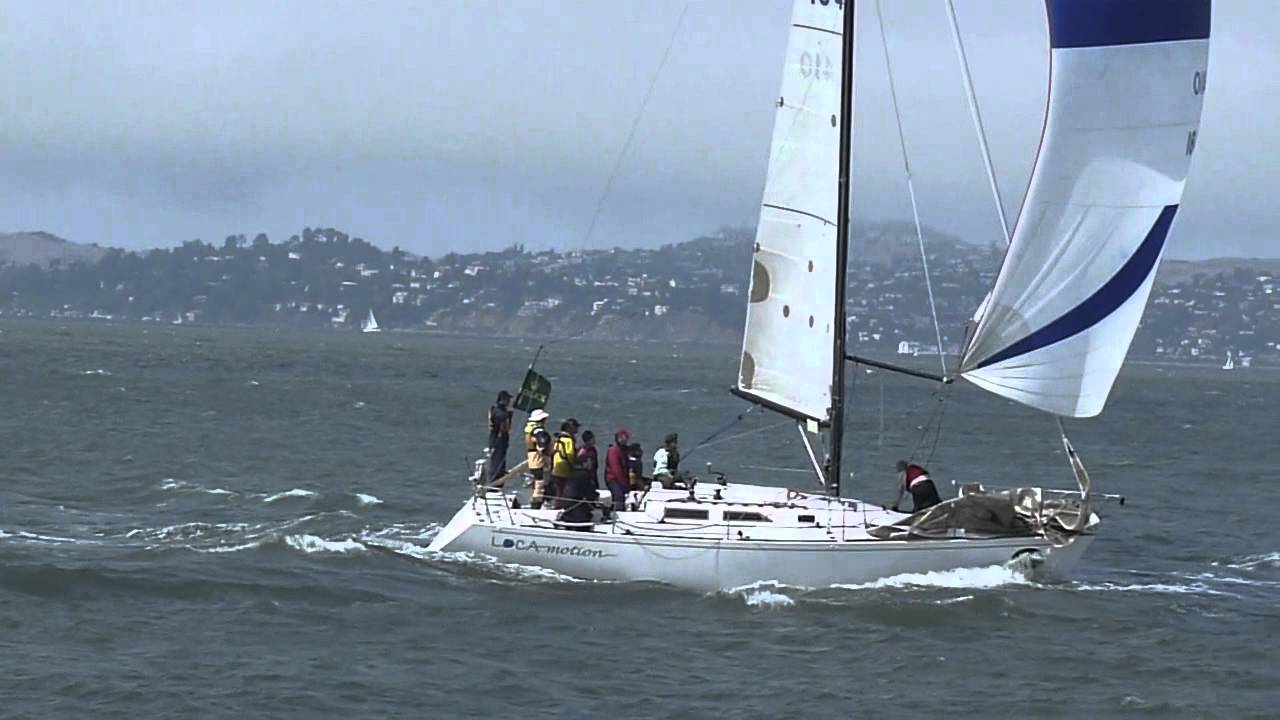I think its fair to say that the Express 37 will appeal to sailors interested in racing more than the dedicated cruiser; although, there is no reason these mid-1980’s models can’t serve double duty for prospective buyers looking for a reasonably priced, solidly constructed racer/cruiser.
The Express 37 was designed by the late Carl Schumacher who, in his all too short professional career, designed more than 60 custom and production boats. He is perhaps best known, at least on the East Coast, for his Alerion Express series built by New England boat builder Tillotson Pearson International. However, the Express 37 built by Alsberg Brothers Boatworks of Santa Cruz, CA between 1984 and 1986 is one of my favorite Schumacher production designs. Although contemporary in appearance, Schumacher’s respect for the beauty of traditional, well balanced boats is apparent in this design.
This design followed the successful Express 27 and was intended to meet the minimum size requirements to enter the TransPac Race (California to Hawaii). Generally the Express 37 is a conservative design with moderate dimensions for length, beam draft, and displacement. The transom beam is slightly greater than typical of mid-1980s racer/cruisers and intended to improve performance on reaching and running legs typically found in the TransPac. To that end, the Express 37 was an overwhelming success finishing 1-2-3 in her class in the 1985 TransPac.
Financial hard times forced Alsberg Brothers Boatworks out of business in 1988, and some have suggested the company failed because its boats were overbuilt and under-priced. While this is likely not totally accurate, there is no doubt Alsberg Brothers built very good boats, many of which are holding up quite well after 20 or more years of competitive racing. The Express 37 was built to ABS (American Bureau of Shipping) standards utilizing a combination of hand-laid and vacuum bagged fiberglass construction methods with ¾” balsa wood core in both the hull and deck composites. While now standard on many high-end boats, vacuum bagging was an advanced construction technique in 1984.
At the risk of being redundant for those of you who follow these articles regularly, there is nothing wrong with boats built with balsa wood core. Although new core materials are introduced almost weekly, it seems, balsa remains a top choice of boat builders and for good reason.
The hull was laid up with vinylester resin in the outer skin to help prevent osmotic blistering, and structural support is provided by fiberglass composite floors, liners, and plywood structural bulkheads. Originally, the main structural bulkhead aft of the mast was ½” plywood, although, at about hull number 20, it was increased to ¾” when cracking was observed on some boats. The hull and deck were joined on an inward flange with 3M 5200 adhesive and stainless steel screws on six-inch centers. Boats that have been responsibly maintained have held up very well after more than 20 years of service.
Considering its heritage, it should come as no surprise that the deck arrangement and cockpit configuration are laid out with racing in mind. All halyards and sail controls are led to winches and sheet stoppers on cabin tops each side of the companionway where they are easily handled by a single crewman. There are wide side decks along the cockpit so that crew weight can be better accommodated aft when broad reaching and running. Tiller steering was standard, although a number of boats have been retrofited with wheel steering.
Below deck the Express 37 again reflects weight-saving considerations and the comfort of a racing crew, more than cruising sailors. The forward V-berth is followed by a starboard enclosed head/shower and port hanging locker. The main saloon has opposing settees and a table that folds against the forward bulkhead when not in use. The galley is aft to starboard and features a gimbaled stove/oven, ice box, and minimal storage. The navigation station is to the port side of the companionway. To keep excess weight out of the ends, the area below the cockpit is wide open with pipe berths on each side.
Late in production, a MK II model was introduced, in an attempt to appeal to more cruising oriented sailors, that offered an optional shallow draft (5’ 11”) keel, a modified interior with an enclosed master cabin aft, upgraded galley, and standard wheel steering.
The auxiliary engine is enclosed in a box below the companionway steps which allows for 360-degree access for service or maintenance. The standard engine was an 18-hp Yanmar 2-GM with an optional 23-hp 3-GM. The smaller engine will be suitable for most conditions; although the more powerful 3-GM will be appreciated.





